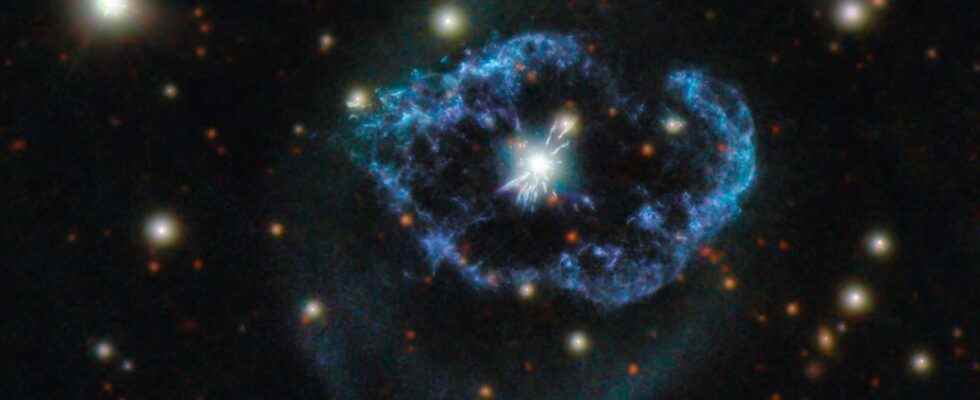If we have a fairly precise idea of the age of our Sun, this is much less true for other stars. To estimate their age, astronomers rely on indirect cues like luminosity and mass, and compare them to theoretical models.
You will also be interested
[EN VIDÉO] Stars form at the edge of a “hole of matter” In the constellations of Taurus and Perseus, astronomers identify two regions of star formation. Regions that seem to touch. An effect of perspective. Because 3D images of these regions now show that they are far from each other. Separated by a cavity, a sort of gaping “material hole”. According to the researchers, it would have been dug by the colossal explosion of a supernova 10 million years ago. The remains of this explosion precisely forming the clouds of Taurus and Perseus. © Harvard University Center for Astrophysics
It is estimated that the Sun is about 4.57 billion years. This evaluation could be obtained thanks to the dating of meteorites containing small inclusions that have formed in the protoplanetary disc shortly after the birth of our star. Knowing the rate of disintegration of isotopes present in these inclusions, we can thus assess the age of the Sun.
This method is unfortunately not applicable to others stars since we do not have meteorites who could provide us with samples of matter primitive. The astronomers therefore resort to more indirect methods. Roughly speaking, it is a question of modeling the changes of internal structure of the star as well as its appearance and its external composition, then to compare them with the results of the observations to deduce the step of the life cycle.
A precision of the order … of a billion years
Except that this method is very imperfect. Some massive stars, for example, will die young while others smaller will burn their hydrogen slower. In addition, the characteristics of a star change very, very slowly. Over the past billion years, temperature and brightness surface area of our Sun, for example, only increased by 20 ° K and 10% respectively, explains Laurent Piau, scientific collaborator at the Free University of Brussels. ” The age of a lonely and weak star mass, like the Sun, cannot therefore be determined with a precision much greater than a billion years “.
The Hertzsprung-Russell diagram
Fortunately, there is another method based on the correlation between the temperature and the luminosity of the star for stars in clusters. At the beginning of the XXe century, two astronomers, Ejnar Hertzsprung and Henry Norris Russell, had the idea to draw a diagram representing the temperature of stars according to their luminosity. This produces a diagonal pattern ranging from cold, faint stars to hot and bright stars. When a star moves away from this diagonal, it is a sign that it is cooling down while retaining its luminosity, a phase indicating that it is in the process of turn into a red giant. This method is however only valid for stars within a cluster which are more or less the same age and which therefore go out in order of decreasing mass.
Skumanich’s law
In 1972, astronomer Andrew Skumanich discovered that young star clusters tend to spin faster than their older counterparts. Indeed, the stars which rotate faster lose more mass and consequently show a more pronounced slowing down of their rotation speed. Andrew Skumanich thus proposed a simple equation to estimate the age of a star: rate of rotation = Ωe t -1⁄2, where Ωe is the angular velocity atequator and t the age of the star. However, this method is only valid for stars younger than the Sun: the older ones do not slow down when they reach a certain age, and on the contrary retain a rotation speed constant.
However, these methods are not 100% reliable and depend in particular on the convective movements inside the star which are very difficult to model. In 2019, when the luminosity of the red giant star Betelgeuse faded, astronomers were unable to say whether this was only a transient phase or whether its explosion in supernova was imminent. Beyond scientific curiosity, determining the age of stars can help us better understand the stellar life cycle and even better research alien life.
Interested in what you just read?
.
fs4
